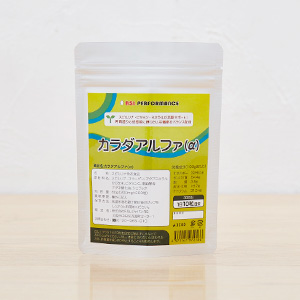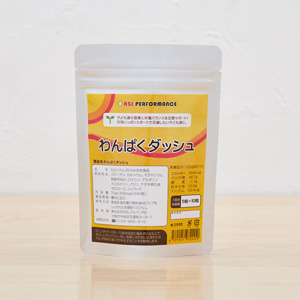We conducted an extensive survey to learn more about the concerns, current situation, and interests of mothers with growing children.
The statistics are very significant and have been covered by many media outlets. We believe you will find it useful as well. Please take a look.
Subjects: 1,200 women nationwide with children aged 10 to 16 (230 aged 35-39, 970 aged 40-49; median age 42)
Method: Screening survey of 3,600 women with children aged 35-49; target population was narrowed down to parents of growing children to obtain responses.
Duration: June 15 to June 18, 2015
95% of mothers want their children to eat a traditional “Ichiju Sansai” meal. But in reality, one out of three mothers cannot make it, revealing a gap between ideal and reality.
“Eating habits are worse than when I was a child. ” One in three mothers feels threatened by convenient and easy meals.
RSL Japan Co., LTD.(Office: Chuo-ku, Osaka; President: Yasunori Nagayoshi), which sells nutritional supplements for growing children, conducted a “Survey on Mothers’ Awareness of Growing Children” targeting 1,200 women aged 35 to 49 with growing children aged 10 to 1
The survey revealed that mothers feel a sense of crisis and a gap between their ideals and reality, such as “I want my child to eat a Ichiju Sansai meal, but I don’t have time to make it,” and “my child’s diet is worse than it was in my childhood,” as convenient and easy meals increase and additives and junk food become more common.
The reason for not being able to cook Ichiju sansai meals is “lack of time” for 65% of full-time workers
95.5% of mothers (agree + agree somewhat) want their children to eat a “Ichiju sansai” meal, which is the composition of a Japanese-style menu, but only 63.2% (always cook + usually cook) of families actually cook a one-soup, three-course meal. However, only 63.2% (always cook + usually cook) of the families actually cook a “Ichiju sansai.”
Q. Would you like your child to eat “Ichiju Sansai” meal?
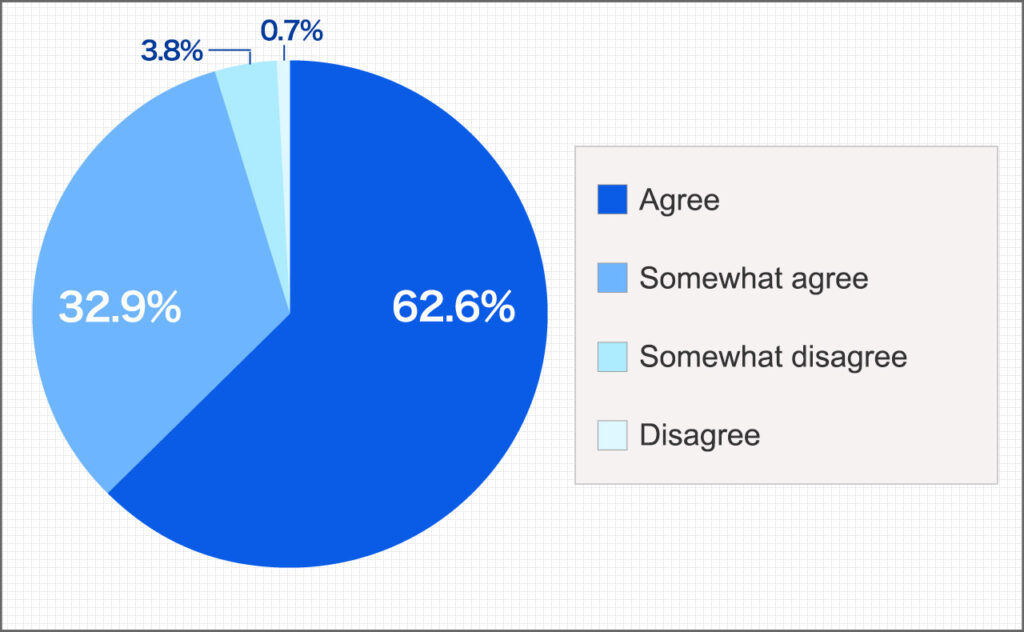
Q. Would you cook “Ichiju Sansai” meal?
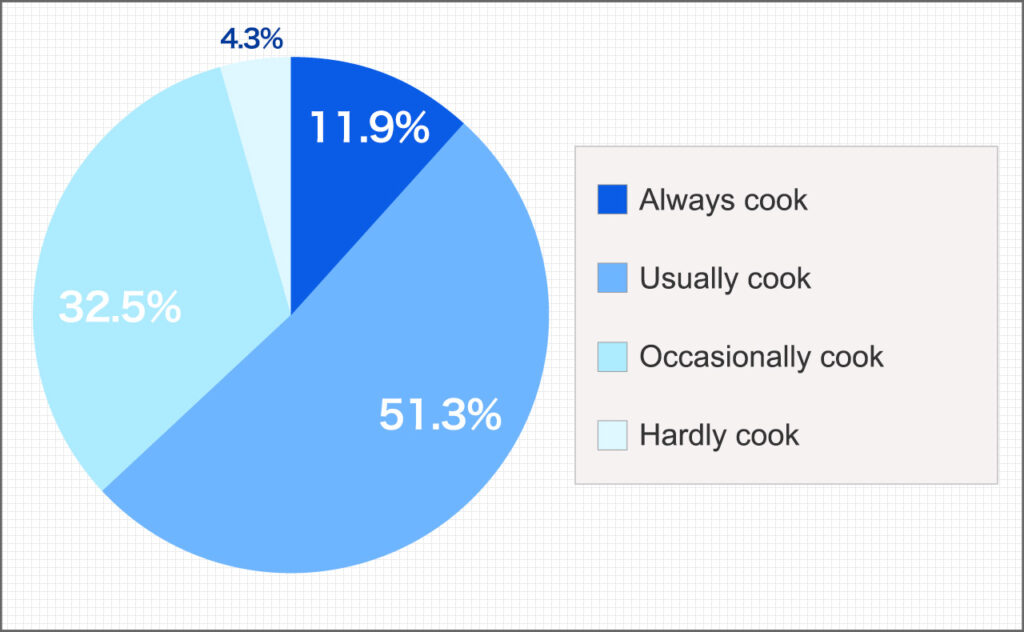
The most common reason for not being able to cook a Ichiju Sansai meal was “lack of time” at 37.9%, but by occupation, there was a big difference by working style, with 64.9% of full-time workers, 40.2% of part-time workers, and 32.0% of housewives.
Q. What do you think are the main reasons why it is difficult to make a Ichju Sansai menu?
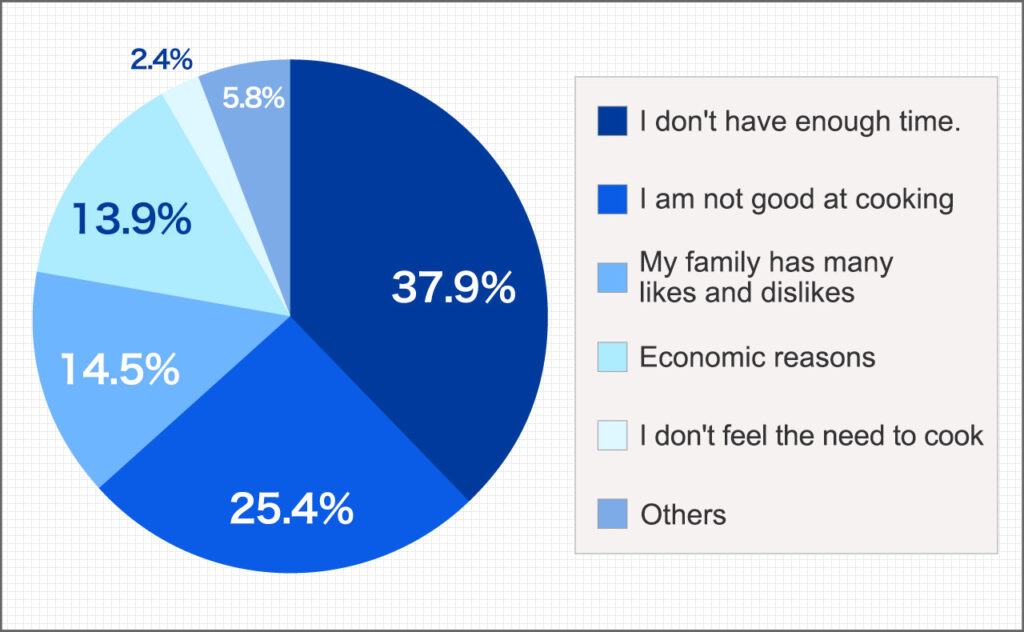
Q. What do you think are the main reasons why you cannot easily prepare a Ichju Sansai menu (by occupation)?
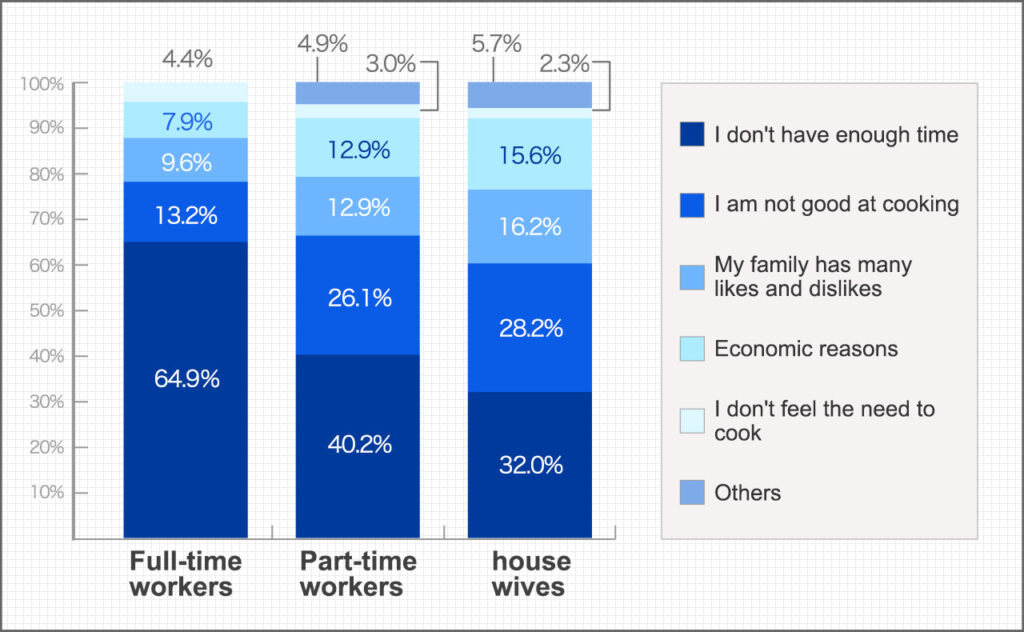
1 in 3 mothers feel that their children’s diet is worse now than it was in their own childhood
45.8% of mothers think that “nutritional balance” is the most important factor for their children’s physical growth.
Despite the convenience and affluence of food, 35.3% of mothers feel that their children’s diet is worse now than it was in their own childhood (worse + very much worse).
Q. Which of the following do you think is most important for a child’s physical development?
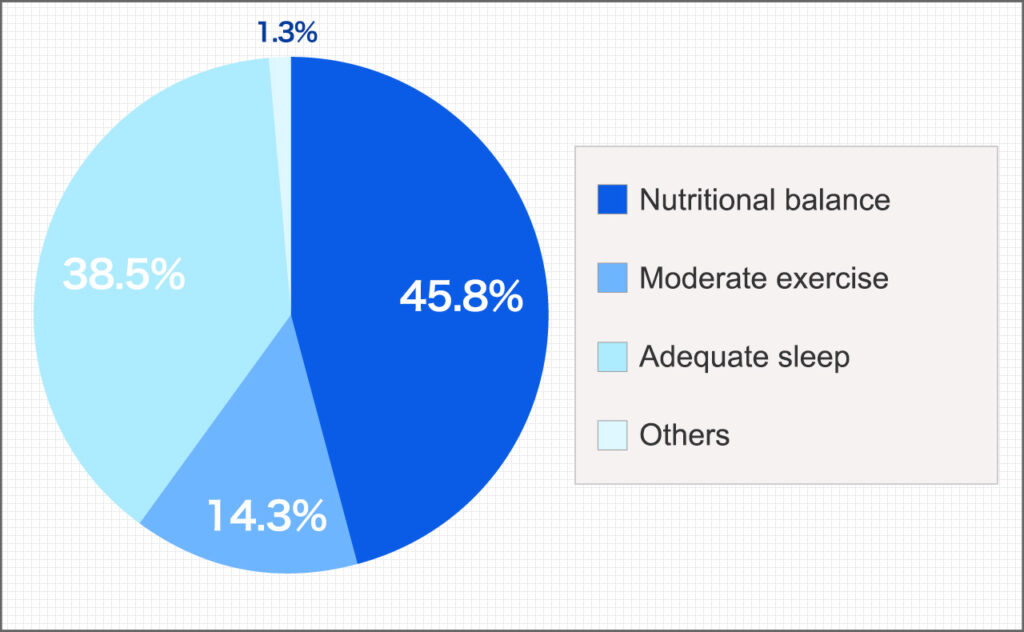
Q. Compared to your childhood, what do you think about the eating habits of children today?
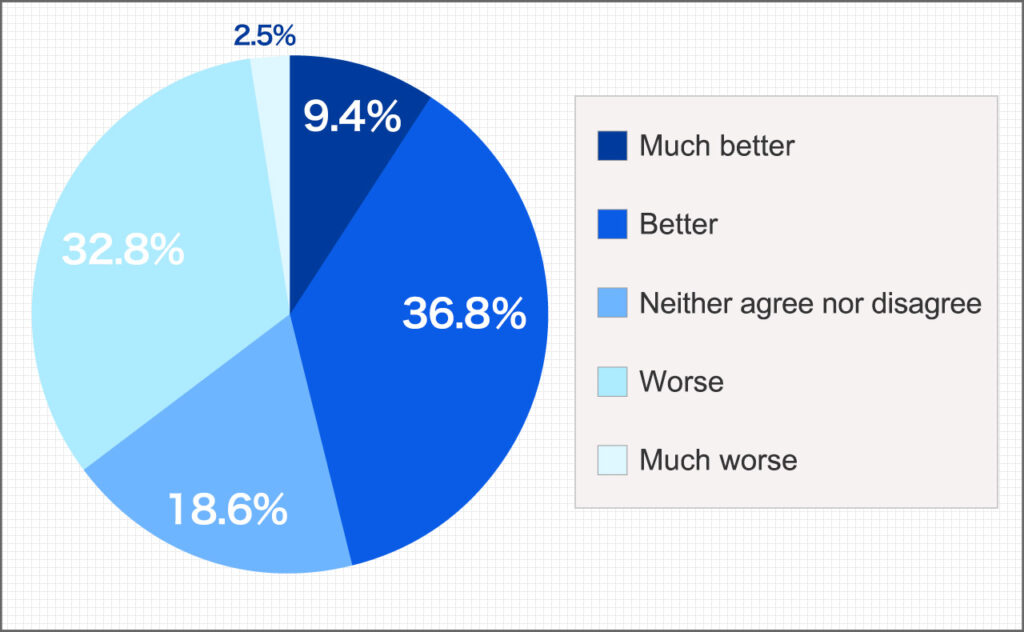
From the free answers, it is clear that many mothers feel a sense of crisis about the negative aspects of the convenient and affluent dietary life, such as the “spread of food with additives,” “increased opportunities to eat junk food due to the increase in convenience stores and fast food,” and “decrease in eating traditional Japanese food and fish.”
Excerpts from mothers who responded, “Compared to your childhood, your child’s diet today is worse.”
- There are too many easy foods. There are too many kinds of sweets and too many soft foods.
- With convenience stores nearby, it has become easier to get processed foods such as pastries, instant foods, and juices.
- I have heard that the soil itself has lost its nutritional value, and I don’t think vegetables have as much nutritional value as they used to.
- Because we can eat and drink with our children’s allowance, we can no longer keep track of where and what we are eating.
- Because there are more working mothers nowadays and the environment is such that children can easily eat food with additives and foods of unknown origin without having to take care of it, such as skimpy meals, instant, retort pouch, and convenience store foods.
- Processed foods have increased, fast food has increased, and the diet has become excessive in carbohydrate
- Because I feel like I eat less seasonal food.
- The food culture is changing due to the increase in the variety of instant foods and the ability to go out to eat easily and inexpensively
- I can easily eat instant foods and convenience store box lunches, so my children buy and eat them.
- There are more opportunities to eat at convenience stores and restaurants, so I eat less homemade food.
- Sweets are fattening and nutritionally unbalanced because they are reasonably priced.
The results of this survey were published in the media.
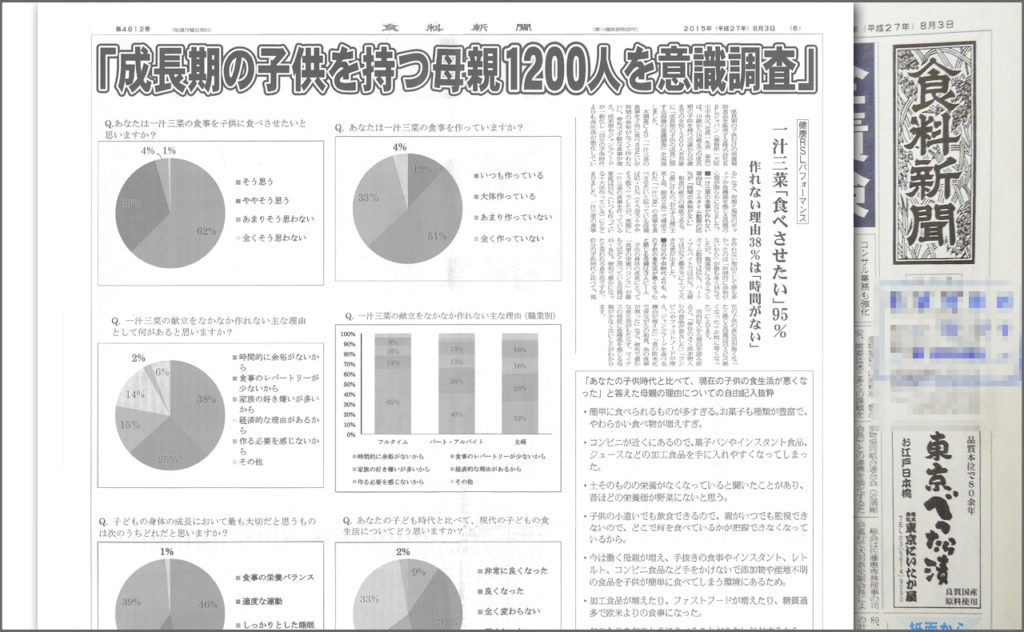
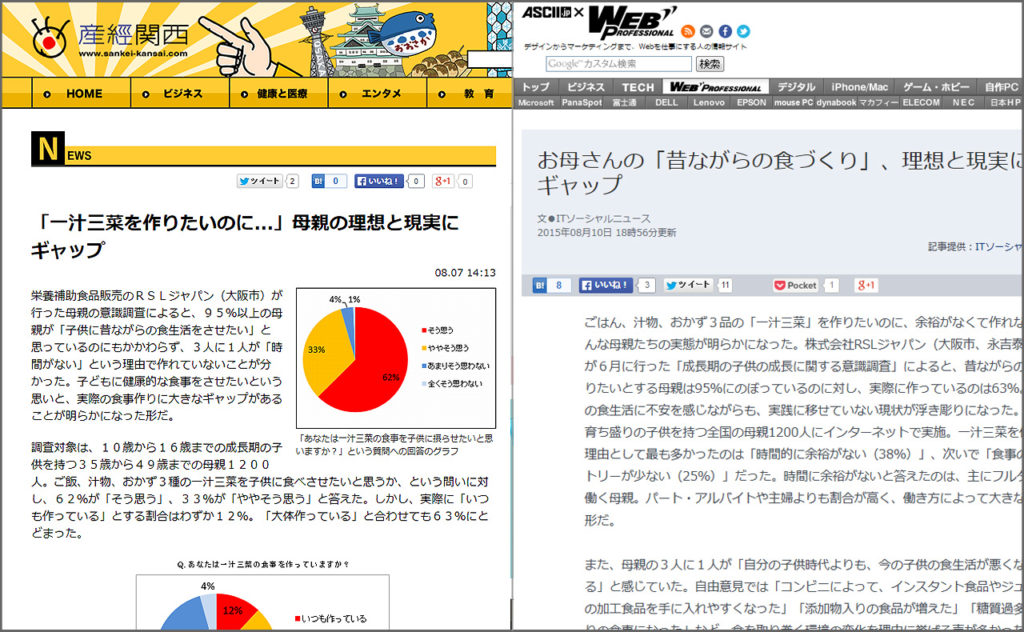
Related Article.
This is a comprehensive nutritional supplement that realizes the wishes of mothers with growing children. It is our number one selling product.
This supplement is specially designed for children who are involved in strenuous sports activities.
What are our thoughts on how we operate? We wrote to you.

